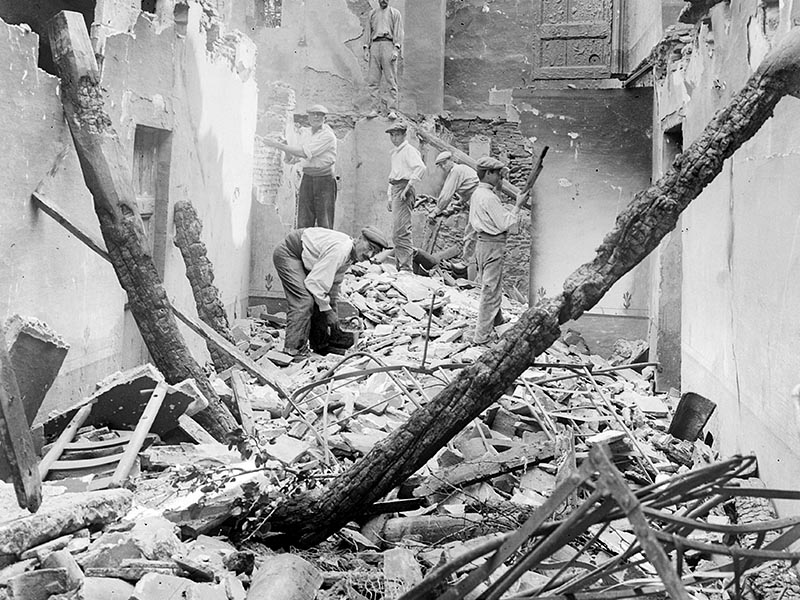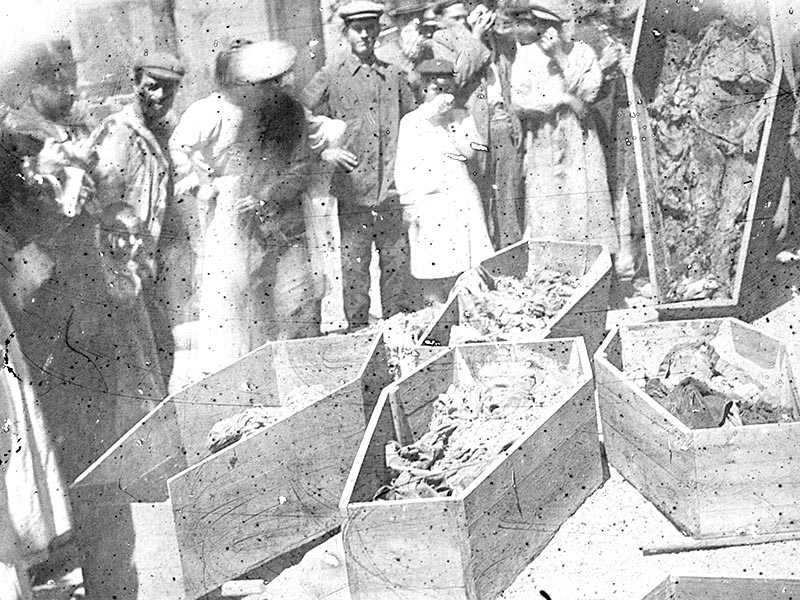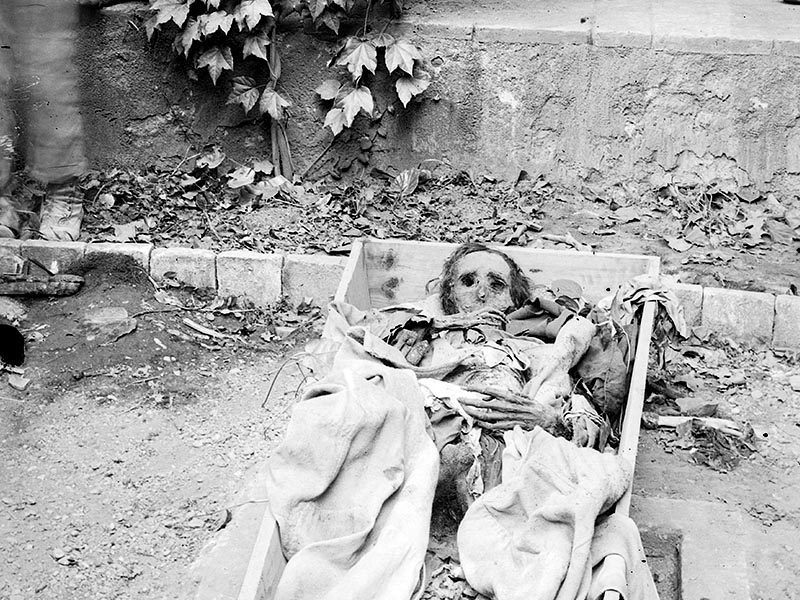Tragic Week and Anti-clericalism
Joan Culla Clarà discusses Tragic Week, and Barcelona’s habit of burning churches and convents.
This is a very old phenomenon in Catalonia. In Barcelona, the first convent burnings, and mass-killing of priests in the contemporary era, occurs in 1835, more than a century before the Civil War. 1835. Many years later, in 1909, an event, known as tragic week, occurs. Which was another explosion of anticlerical violence, specifically against [church] structures. Not so much against people, but they burned 50-60 convents, churches, etc. In urban worker culture, the church is seen as the worst of enemies. to analyze the “Why.” But in the list of enemies, before the bourgeoisie, before capital, judges, the army, the Civil Guard… There was the church, and every time people felt the streets were theirs, every time the people believed they could do whatever they wanted, the first thought was to go burn convents and churches. This happens three times in a century, so it’s a tendency. In 1936, this happens in a revolutionary context. In the context of a city where, from the 20th or 21st of July, tthere are tens of thousands of weapons in the hands of anyone who wants one. So, this has a great violent component. Not only the destruction of churches, hundreds of churches, religious symbols, images, etc. but also the killing of thousands of members of the clergy. But, like I said, this isn’t unique to the 1936 revolution. A hundred years before, the same thing. Plus it’s very old, ancient, and surely it can be explained. Because the Catholic Church in Spain had aligned itself with the powerful, the grand landowners, the power. This resulted in deep hatred from the lower classes. It was deeper than what was felt for other enemies. Of course, assaulting barracks is always a bit more dangerous than assaulting a convent or church. Generally, they aren’t defended or armed. So it isn’t a very heroic target, it doesn’t need any great… well. Where does this all come from? Oh right, Jackson’s quote. Well, of course. For the past 60 years, North American historians have been, understandably, curious about this. Because this never really happened in their culture. There’s a North American historian who must be long dead, Joan Connelly Ullman, who wrote… Wrote a book that was, for a long time, the reference book about Tragic Week. And Gabriel Jackson, among others, studied the anticlericalism of the republican and civil war years. No, the difference between Madrid and Barcelona, there’s a reason for it. Here, for weeks, maybe 3 or 4 months, the armed anarchists were able to do whatever they wanted without threat from the military enemy. The front, all fronts, were very far from Barcelona. Hundreds of kilometers from Barcelona, unlike Madrid. In Madrid, from Summer ’36, Franco’s troops began advancing on the capital, and by early November had it, nearly, surrounded. When there’s an enemy at the gates, people think, “Well, maybe instead of burning the neighborhood churches we should see if we can stop the fascists?” Maybe that’s more urgent. “We’ll burn the church later, when there’s more time.” Know what I mean? But here, there wasn’t that urgency, wasn’t the military threat. I think that’s why.
Teresa Abelló dispels the notion that Tragic Week was organized by Barcelona’s early 20th century labor movement. Tragic Week marks a new chapter, foreshadowing events that would occur, not just within the labor movement’s dynamics, but also, I’d say, within Spanish politics. Tragic Week, which occurs in the last week of July, 1909, illustrates and symbolizes the failure of the Spanish government’s regenerationist policy. In fact, after Tragic Week, the government will fall. And what does it mean for the labor movement? Looking at the dramatic events of Tragic Week, we must consider that Barcelona was practically on fire. There was…if we look at a map, one sees hundreds of buildings burning throughout the city. Barcelona’s working-class community, of course, participated, in this movement, this event. However, it wasn’t driven by the labor movement from Barcelona. My research suggests that it proved an enormous setback for the Barcelona labor movement, because it causes a delay– there is repression after Tragic Week– so it postpones the process of labor movement reorganization. This will delay CNT’s founding for a year. Everything is frozen. It is an explosion of violence, but not a revolution, as is sometimes suggested. It is an outburst of rage, an expression of hopelessness, but not a signal of social revolution. So Tragic Week is not really part of the labor movement nor its history. It’s important in the sense that it blew everything apart that was organizing at the time. It holds things up, but that event is not, itself, a part of the history of the labor movement.
Ramon Alberch discusses the motivation behind Tragic Week in Barcelona.It’s true that the Tragic Week of 1909 is, originally, an anti-militarist movement. It also involves the open conflict between the army in Catalunya and some citizen groups, the left-wing in particular. The transition from a military to clerical conflict is related to class-oriented interests– a phenomenon that will occur again in the era of the 2nd Republic between the Front of Order and the Popular Front. Some economic, social and religious interests converge. Historically, the army, the church, the aristocracy, landowners and bourgeoisie are bound together against the more progressive leftist sectors, those that are usually secular, revolutionary and eager to carry out reforms. This happened in 1909, and again during the 2nd Republic. It’s why it’s often said that there are two Spains. And why Lorca, an extraordinary writer said, “One of them will break your heart.” This remains. The conservative, religious, traditional point of view, and the progressive, secular, leftist point of view. These are uncomfortable bedmates. The church, at the time, along with the army, aristocracy, landowners and upper bourgeoisie were seen as parts of the same whole. What do people do? It was unwise to take out their frustration on the army, since this was an armed force. So their radical response is to burn convents and churches. They are seen as being in allegiance with a state they don’t like one bit. So I think, at heart, it’s a symbolic gesture. Attacking those that represent or are complicit in the oppression. In this sense, the famous fires of 1909, and the verses from Joan Maragall, are part of an ideological fracture running through the state.
Ramon Alberch discusses the execution of Frances Ferrer i Guàrdia. Frances Ferrer I Guàrdia is a very important figure. He is the face of the Rationalist School, which was, at the time, very imposing. Ferrer I Guàrdia has the intelligence, the capacity to champion the Modern School, the Rationalist School. The names say it all. The children must be taught, unchained from the religious and classist doctrine of the past. Religion, very often, brainwashes people, and the bourgeoisie’s ideas on education are very narrow. The education of children is heavily influenced by the state, which is historically conservative, traditional, religious. We need to stop that. Capitalizing on an international wave, he says, “No, we need a modern school, a rationalist school for the children of the workers.” It’s all very much focused on the lower classes. Rationalist, cartesian. Reflective principles of intelligence a world away from the mythology, symbolism, religiosity and classism of the past. Back then, that’s all very scary. An important movement, with the Ateneu serving as backbone, begins educating the working class. And not only the children, but the working class themselves, in secular principles. In this context, Tragic Week was the perfect opportunity to uproot this rationalist school movement and execute its most important proponent, Ferrer I Guàrdia. What’s the saying? “Now’s our perfect chance.” Looking back, it’s obvious that he had nothing to do with, was not an instigator of Tragic Week. But they see the burning of convents, the aggression, etc. as rooted in education. People have lost the fear of divine punishment, and, clearly, abandoned the prejudices and fears of the past. So the motive is obvious. That is, “Watch Out.” This is the influence of anarchism, rationalism, Cartesianism. A rebellion against the church and social hierarchies is beginning to take root. So it’s a perfect time to eliminate the movement’s leader, Ferrer I Guàrdia, and, indeed, when they shoot Ferrer I Guàrdia, and some of his colleagues, the rationalist school movement is slowed dramatically.

1909 – Church Sant Joan d’Horta after Barcelona’s Tragic Week

1909 – Unearthed corpses at Magdalenes convent on Carrer de Casanova

1909 – Unearthed corpses at the Beates convent in Barcelona’s Barri de Poblet
